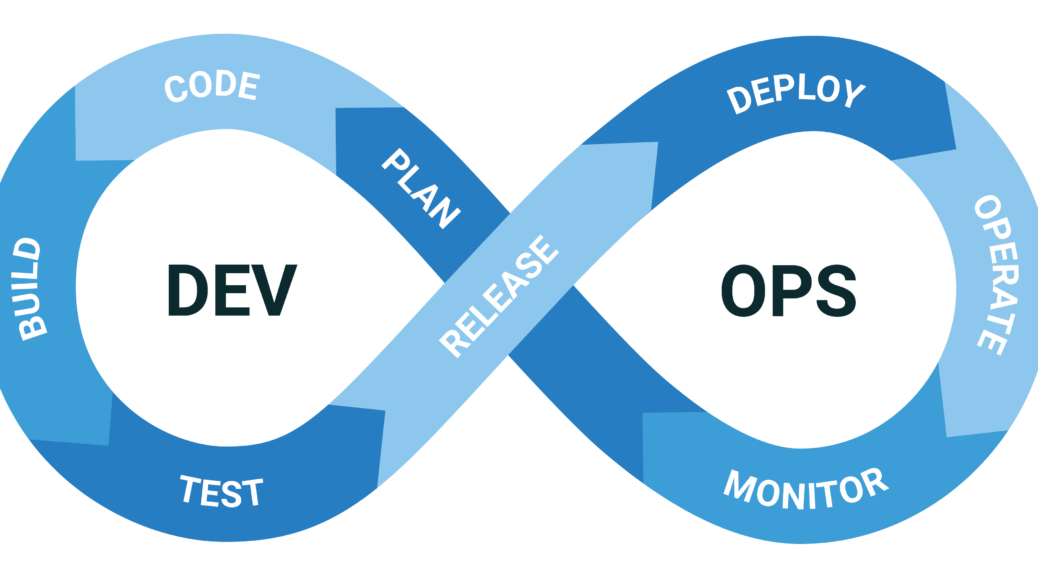
Introduction to DevOps: Exploring the Fundamentals and Benefits of DevOps Practices in Software Development
In the ever-evolving landscape of software development, teams are constantly seeking efficient ways to build and deploy high-quality applications. Enter DevOps – a set of practices that combines development (Dev) and operations (Ops) to enhance collaboration, streamline processes, and deliver software faster and more reliably. In this blog post, we will delve into the fundamentals of DevOps, explore its benefits, and understand how it revolutionizes software development.
Table of Contents:
- What is DevOps?
- Key Principles of DevOps
- The DevOps Toolchain
- Benefits of DevOps
- Implementing DevOps: Best Practices
- Challenges and Mitigations in DevOps Adoption
- DevOps Success Stories
- Conclusion
- FAQs
What is DevOps?
DevOps is a cultural and professional movement that emphasizes collaboration and communication between software developers and IT operations teams. It aims to break down the silos between these two groups and create a culture of shared responsibility throughout the software development lifecycle. DevOps encourages the adoption of automation, continuous integration, and continuous delivery to ensure faster time-to-market and higher customer satisfaction.
Key Principles of DevOps:
- Collaboration: Promoting cross-functional teams and fostering collaboration between developers, operations, and other stakeholders.
- Automation: Automating repetitive tasks, such as testing, building, and deployment, to increase efficiency and reduce errors.
- Continuous Integration: Merging code changes into a shared repository frequently to detect and address integration issues early.
- Continuous Delivery: Ensuring that software can be released to production at any time by implementing automated testing and deployment pipelines.
The DevOps Toolchain:
The DevOps toolchain comprises a set of tools that assist in automating various stages of the software development lifecycle. These tools include source code repositories (e.g., Git), build systems (e.g., Jenkins), configuration management (e.g., Ansible), containerization (e.g., Docker), and monitoring (e.g., Prometheus). Choosing the right tools based on specific project requirements is crucial for a successful DevOps implementation.
Benefits of DevOps:
- Increased Deployment Frequency: DevOps enables frequent software releases, allowing organizations to respond to customer needs and market demands rapidly.
- Faster Time-to-Market: Continuous integration and delivery practices reduce development cycles, ensuring faster delivery of features and bug fixes.
- Improved Collaboration: By bridging the gap between development and operations teams, DevOps enhances communication, knowledge sharing, and teamwork.
- Enhanced Quality: Automated testing and continuous monitoring lead to more reliable software with fewer defects, resulting in improved customer satisfaction.
- Scalability and Efficiency: DevOps practices, such as infrastructure as code and containerization, enable efficient scaling and resource utilization.
Implementing DevOps: Best Practices:
- Start Small: Begin by implementing DevOps practices in a small, focused area to gain initial experience and build momentum.
- Culture and Communication: Foster a culture of collaboration, trust, and shared ownership, and ensure effective communication between teams.
- Automation: Automate repetitive and manual tasks to eliminate errors and increase productivity.
- Continuous Feedback and Improvement: Continuously monitor and measure key performance indicators, seek feedback, and make iterative improvements.
- Security Considerations: Incorporate security practices throughout the DevOps lifecycle to address potential vulnerabilities.
Challenges and Mitigations in DevOps Adoption:
DevOps adoption may encounter challenges such as resistance to change, cultural barriers, and the need for new skills. Mitigations include executive sponsorship, training and upskilling, creating cross-functional teams, and adopting a gradual approach to change.
DevOps Success Stories:
Numerous organizations have achieved remarkable success by embracing DevOps principles. Companies like Netflix, Amazon, and Etsy have demonstrated how DevOps practices can lead to improved customer experiences, increased operational efficiency, and significant business growth.
Conclusion:
DevOps is not just a buzzword; it is a transformative approach to software development that brings developers and operations teams together to deliver high-quality software faster and more reliably. By fostering collaboration, automation, and continuous improvement, DevOps practices empower organizations to respond to market demands with agility and efficiency. As software development continues to evolve, DevOps remains a critical component for businesses seeking to stay competitive in today’s digital landscape.
Remember, embracing DevOps is a journey, and it requires a commitment to cultural change, technological adoption, and continuous learning. By embracing the fundamentals and benefits of DevOps, organizations can unlock their true potential and revolutionize their software development processes.
FAQs:
What is DevOps?
DevOps is a collaborative approach that combines development and operations in software development to enhance efficiency and streamline processes.
What are the benefits of implementing DevOps?
Implementing DevOps practices leads to increased deployment frequency, faster time-to-market, improved collaboration, enhanced quality, and scalability and efficiency.
Which tools are commonly used in the DevOps toolchain?
The DevOps toolchain includes tools like Git, Jenkins, Ansible, Docker, and Prometheus, among others.
How can I start implementing DevOps in my organization?
It is recommended to start small, foster a culture of collaboration and communication, automate repetitive tasks, seek continuous feedback, and consider security practices.
What challenges may arise during DevOps adoption?
Challenges may include resistance to change, cultural barriers, and the need for new skills. Mitigations include executive sponsorship, training, creating cross-functional teams, and adopting a gradual approach.
Are there any success stories of organizations adopting DevOps?
Yes, companies like Netflix, Amazon, and Etsy have achieved significant success by embracing DevOps practices.
How does DevOps contribute to faster time-to-market?
DevOps enables continuous integration and delivery, reducing development cycles and facilitating faster delivery of features and bug fixes.
What role does automation play in DevOps?
Automation is crucial in DevOps as it eliminates errors, increases productivity, and enables efficient and reliable software development processes.
How does DevOps enhance collaboration between teams?
DevOps breaks down silos between development and operations teams, fostering collaboration, knowledge sharing, and shared ownership of software development processes.
Is security considered in DevOps practices?
Yes, security practices should be incorporated throughout the DevOps lifecycle to address potential vulnerabilities and ensure the delivery of secure software.
We encourage you to share your comments, feedback, or criticisms regarding DevOps. Please remember to be respectful and constructive in your communication. Thank you for being a part of our community!